Vercillo knits together the artists’ stories with intricate, deeply profound knowledge about the mental health issues in discussion without feeling sterile or like reading a textbook.
Before reading The Artist’s Mind, I felt I had a general inclination of the relationship between artists and mental health. In my mind, perhaps every “good” artist had a challenge with maintaining healthy relationships with themselves and their surroundings, which made their work interesting. I also assumed they were resistant to treatment or held onto their struggles out of fear of losing what drove them creatively.
While portions of this opinion may be true, I now realize the deeply complex relationship between artists and their work varies as widely as the work itself.
Upon opening The Artist’s Mind, I was initially taken in by the general pleasantness of the pages. The colors and sketches of the artists feel comforting, as well as honest, depicting the subjects in states that appear to be a most recognizable demeanor; white space allows for notes or comments in the margins or ends of sections; and small additions of color at the edges of pages reminds the reader of the emotions associated with each story.
Three sections dedicated to groupings of mental health conditions- depression spectrum disorders, trauma and PTSD, schizophrenia and outsider art- allow fuller understandings of these categories through the lives of the artists who lived them, but that is not to say they are all the same. Each artist chosen to represent a portion of each section gave weight to the scale in which an individual could experience the diagnosis. Diving into each new artist was like a new adventure, taking the reader on an outside view of the pain or intense period of their lives as depicted in the artist’s work. The descriptions of the artist’s work prepared me for imagery of the actual piece (which I stopped to look up with every new artist), uncovering several elements that, at least for myself, might have gone unnoticed. Repetition compulsion and the subject of the “identified patient”, dynamic coloring or layering, suggests different components of the artist’s life that would allow the viewer to connect on a deeper level with the story the artist is telling.
“...art has the power not only to help the individual artist cope with depression, but also to connect us all to our shared humanity.” (pg. 62)
Vercillo finds a way to describe the artist’s mental state and implications of each diagnosis in a way that teaches the reader about mental health without detaching from the humanity of the subject. She trusts her readers to understand while also using language that is clear, but not demeaning. “Like all mental health issues, depression has biopsychosocial roots. In other words, it’s the combination of nature and nurture.” (pg. 27) While learning about schizophrenia and the many misunderstood components of the illness (and the efforts to destigmatise it in our time of new understanding), I also learned about “outsider art” (or, more acceptably “self-taught” or “visionary” art) which I had never heard of before. She describes the demeaning nature of the term itself, as well as the problematic nature of insinuating the artist was discovered by another person. (pg. 143) This led me to take note later on in the section that artists are not discovered, but they can perhaps be seen in their true nature.
Although to someone such as myself who has neither background in art nor psychology, I might have appreciated a glossary of terms, Vercillo does an excellent job of bringing forward important terminology and appropriate referencing to the topics discussed. In her introduction she notes that she will be referring to the diagnosis in two ways- the way it was categorized in the artist’s time period, and the way it is categorized in today’s understanding. (pg. 10) She also notes the complexity of understanding a person’s full mental health functionality. “When looking at a person’s journey from the outside, no matter how objective and detailed the study, it is difficult- if not impossible- to grasp the full picture of their unique experience, especially for historical figures.” (pg. 9)
In The Artist’s Mind, I find myself asking questions about myself in relation to the person I was reading about. What sort of compassion might I have had for this artist? Would I have understood their work? Would I have been able to fully appreciate their story had I known them in real time? I connected to certain artists, finding lines between events in their lives and events in my own life. It allowed me to consider the way my creativity has unfolded and continues to unfold. I have not answered the question of whether mental health leads to creativity, or if it heals or hinders. But, Vercillo makes it plain that is not the point.
“Mental illness is rarely neat or predictable. Although [Louis Wain’s] work is not likely an exact representation of his illness, it does in some way provide insight into his psychological state.” (pg. 159)
Vercillo states in her introduction, “...each of us lies somewhere on the mental health spectrum and somewhere on the artistic spectrum,” (pg. 9). In parallel, reading the chapter about Yayoi Kusama, Kusama says she is not cured, but rather “managing madness”. (pg. 127) Hearing two creators articulate feelings of my heart made me feel seen. Ultimately, that is what I received from this book. I felt seen, not only as a person who struggles with mental health, but as a creative looking to understand the relationship between my art and my state of being. I feel a deeper connection to the artists whose work I feel I can now better appreciate, and want to know more about what their work meant to them. I would not recommend this for the casual reader. This book is for someone intentionally looking to understand their own relationship between mental health and creativity, or that of the creative voices in their lives.
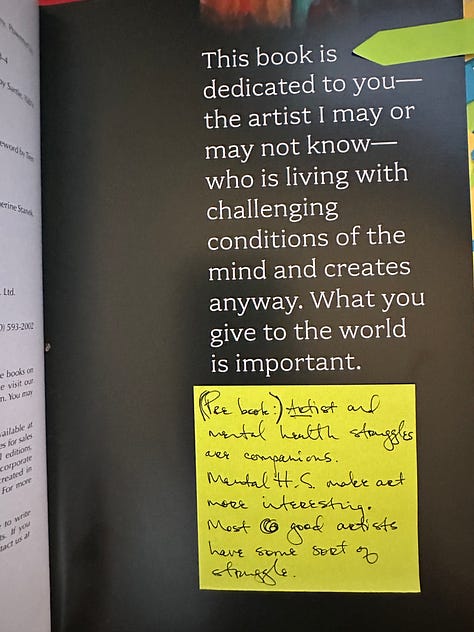
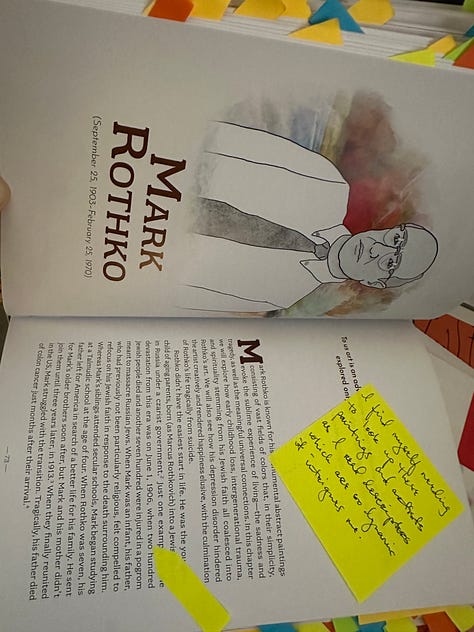
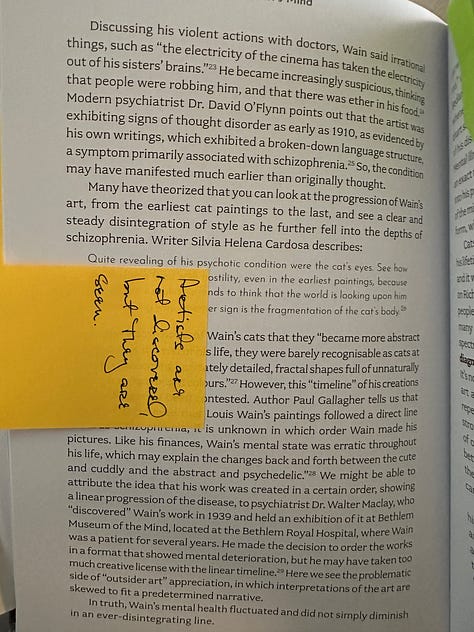
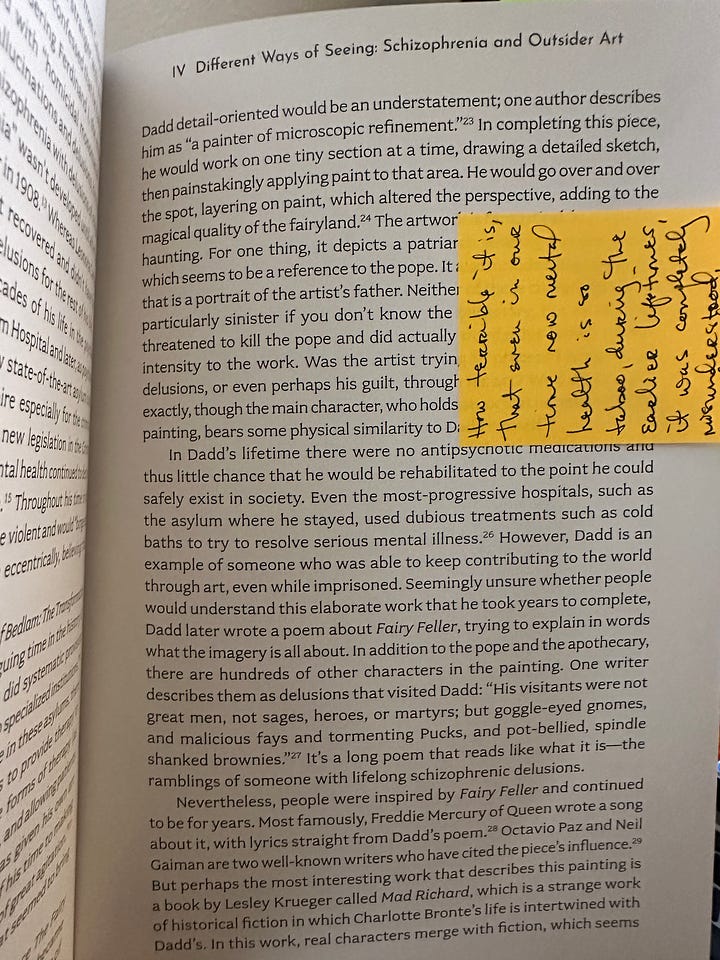
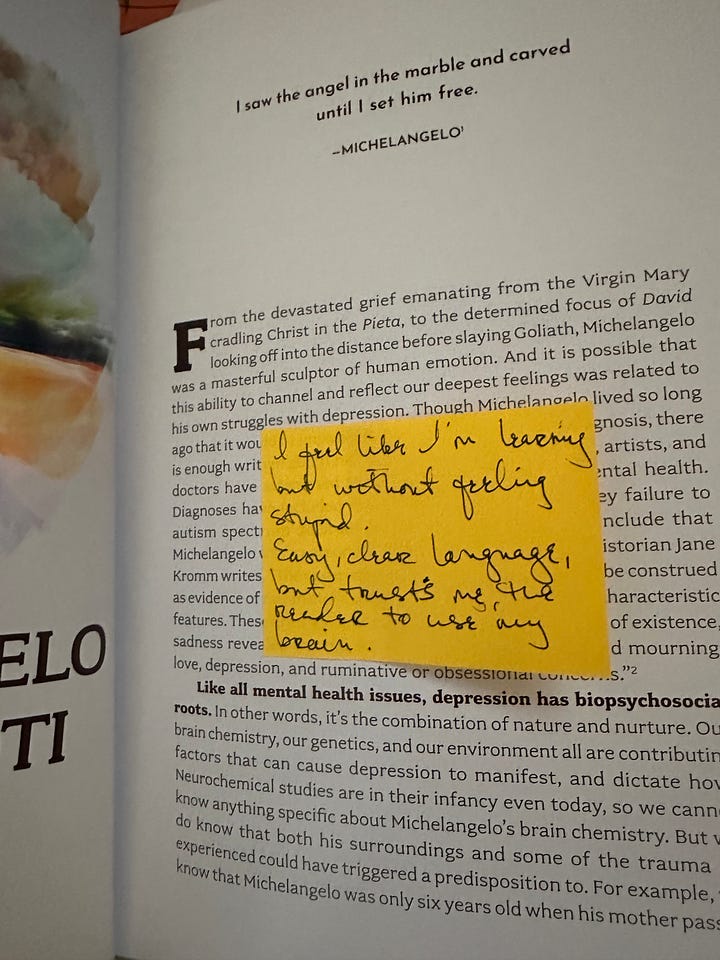
Where to find out more
Buy the book:
Also listed in the Buy Indie section of Substack
By and about the author:
On Substack, currently the best place to see Kathryn’s writing and connect with her
Website (under construction)
@createmefree on Instagram, Facebook, and Threads
Kathryn.vercillo@gmail.com for anyone who wants to reach out
About the Author Kathryn Vercillo ( )
Kathryn Vercillo is a writer/ artist with a passion for researching the complex relationship between art and mental health. She came to this niche through her own experience of crocheting through life-threatening depression, a story she told in part in her book Crochet Saved My Life. She went on to spend over a decade researching the mental and physical health benefits of crochet and crafting while obtaining her Masters Degree in Psychological Studies.
She has since expanded to an exploration of all creativity and wellness with an emphasis not only on art as therapy but also on the many nuanced ways that mental health symptoms impact creative process, content, medium, productivity, self-perception and reception by others. She doesn’t distinguish between “good” or “bad” impact so much as opens a curious eye towards the various ways that art is shaped or changed by different symptoms for different people.
Kathryn writes full-time about this topic, digging into it through various tools including interviews with contemporary artists, academic research into historic artists, multi-media research into the topic, and essays written from lived experience. She hopes that by sharing what she learns with others, she can help other artists and writers better understand the way that their personal challenges may impact their art. In addition to understanding, she hopes this work offers validation, encouragement for gentleness with yourself and others, a strengths-based and trauma-informed approach to creativity in all industries, and the beginning of a conversation about the many ways that art and mental health are linked.
For nearly two decades, Kathryn has written for a diverse array of online and print publications, including books that she self-published as well as those published with small publishers. In recent years, she has been moving away from a “pay me per article” approach to writing and using a subscription-based model of support from patrons (currently available through Substack) to support her creative process. This is a reflection of her own need to shift from a model of churning out “content” to one that is more thoughtful, slow, intentional, connected, and community-based. It is also a reflection of what she sees other artists needing, especially those with various mental health challenges. She, herself, continues to live with chronic recurring bouts of major depression that impact her own work in varied ways.
Learn more and support her work on Substack. Her personal goal is to find 1000 people to support her at a rate of $100 annually because they believe in the power of her work, the importance of art in our communities, and the need to move away from a machine-like model of creativity. At that rate, she becomes a six figure artist (almost imperative in San Francisco) which serves as a model to others that they can do the same. Moreover, she commits to giving at least ten percent of all earned income to other writers, artists, performers, and makers so that at least five figures remain right within the creative community.
Kathryn is always open to conversation and collaboration. Kathryn.vercillo on gmail.





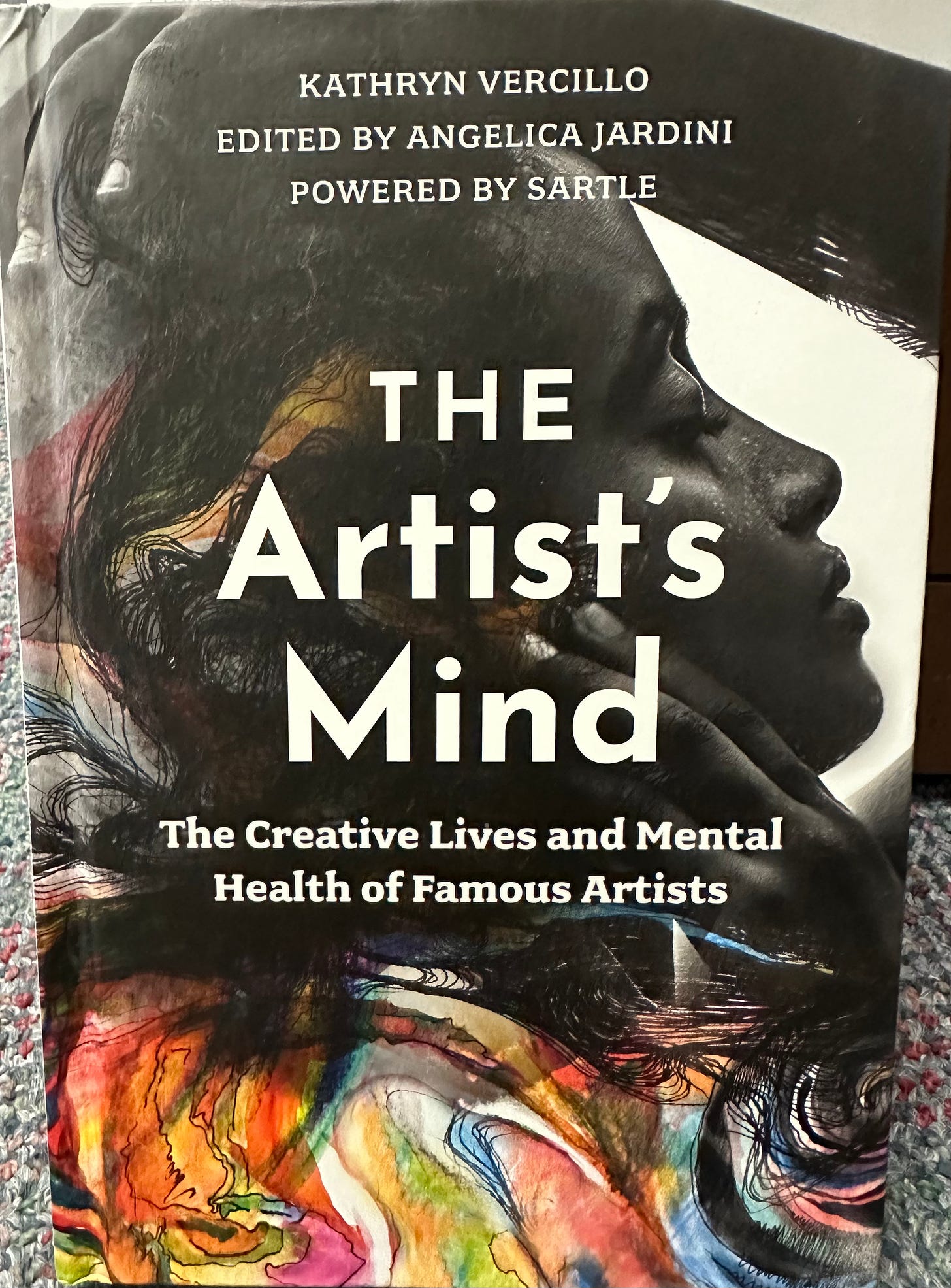
What a superbly written review Samantha. Your detail was amazing. I especially like Kathryn’s impression that we are all somewhere on the spectrum of mental health, as well as creativity.
I love that you are a creative being searching for the link between your art and your deepest self. I can really relate to that, as can most writers I imagine. I find that’s how I access what’s deepest inside.
It was interesting learning Kathryn’s history, she is a wise woman (as are you) with so much to offer.